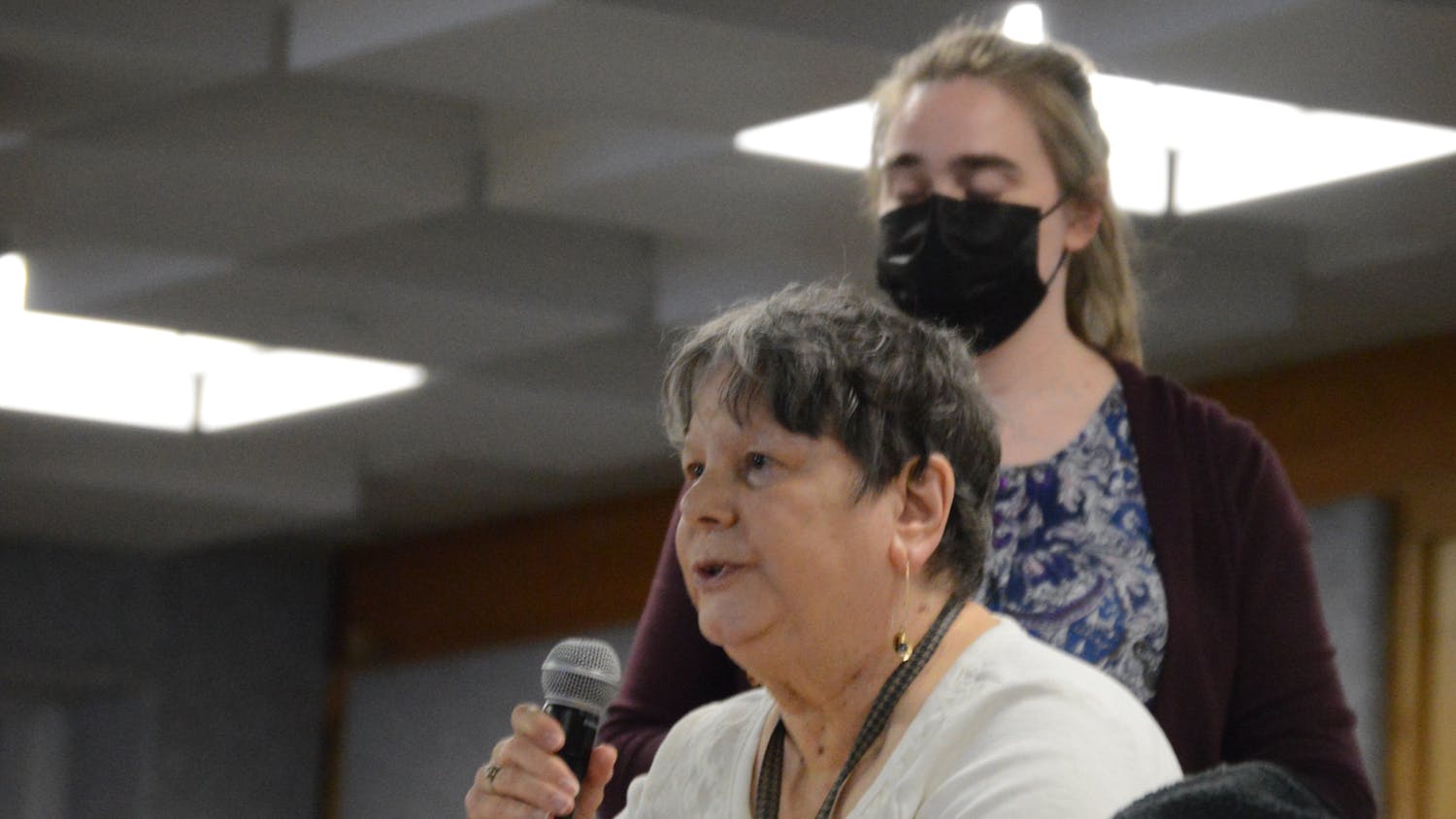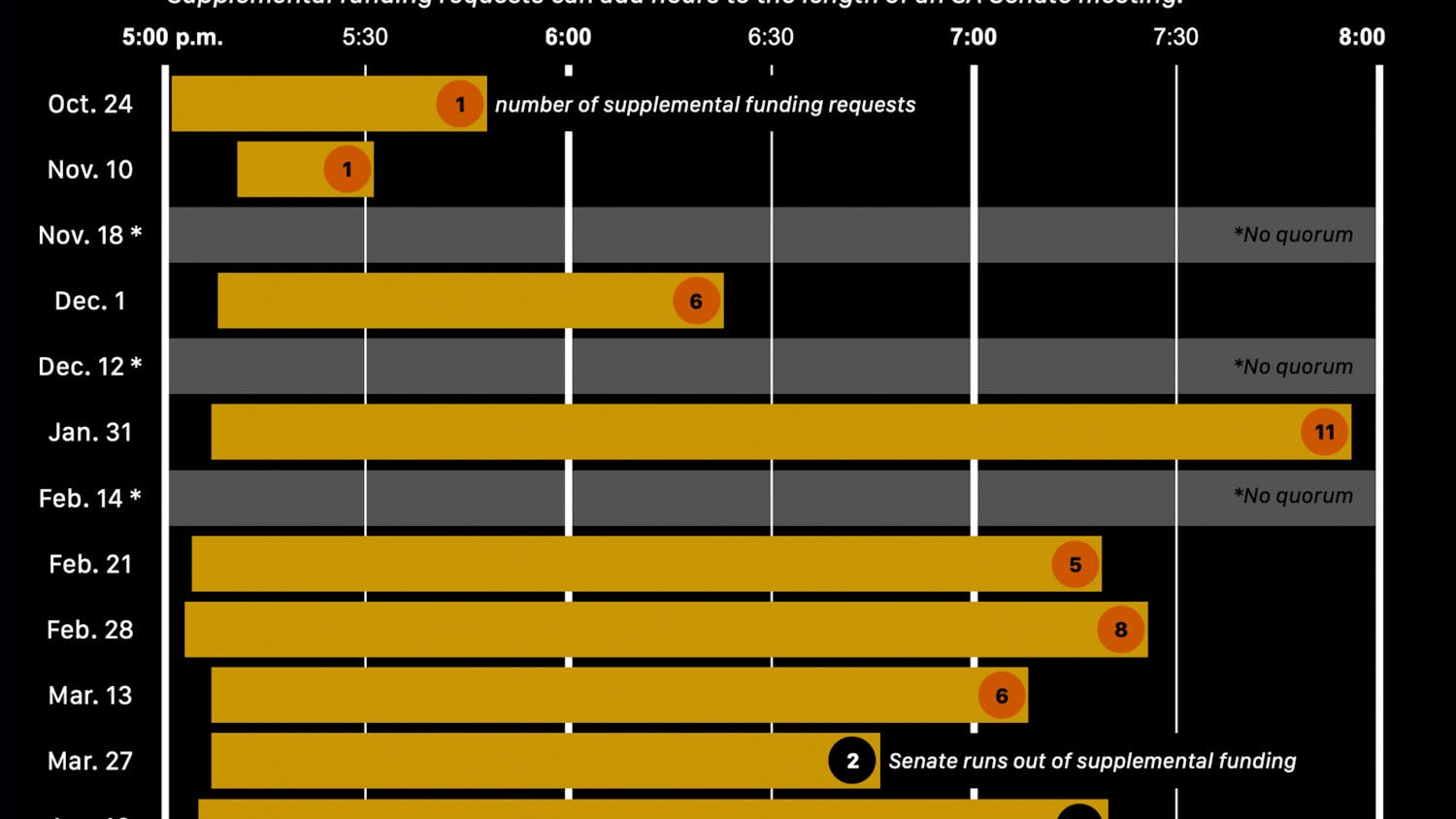Skinnersville Road, situated on the northwestern edge of UB's North Campus behind the Ellicott complex, will soon be the location of the university's latest student-housing development - this time, for graduate, professional and married students.
The university plans to break ground for the Skinnersville Road project sometime this week, with the complex slated to open in August 2002.
The $11 million complex, sponsored by the University at Buffalo Foundation Inc. in conjunction with the UB Alumni Association, will house 232 students in two-bedroom townhouse and ranch-style units. The site will resemble Flickinger Court, UB's existing graduate-housing complex, in design and scope.
The university's fifth housing project has sparked controversy among local residents and the Environmental Task Force, UB's advisory body on campus environmental issues.
The property surrounding Skinnersville Road, which includes Letchworth Woods and Bizer Creek, was dubbed a "protected natural area" pursuant to the univesity's "Protected Natural Areas Policy," which was endorsed by the ETF last year. Areas included in the policy are "off-limits to development unless it is demonstrated that development serves a critical university need and that an acceptable alternative does not exist."
The Skinnersville Road plan is intended to meet what university officials deem a substantial demand for housing at the graduate level, "a segment of our population that we have very few housing opportunities for," said Clifford Wilson, associate vice president for student affairs.
In Fall 1999, UB's graduate population stood at 6,334 students - over one-quarter of the university's total enrollment. Flickinger Court, which houses 230 students, is currently the only housing complex strictly reserved for this segment of the student population.
According to Vice President for Student Affairs Dennis Black, the complex has been at full capacity since opening in 1998 and has shown a very low turnover rate, indicating graduate student satisfaction with the apartments.
While demand for additional student housing, whether at the graduate or the undergraduate level, is generally recognized, several campus environmental advocates and Skinnersville Road residents have objected to the university's site selection.
The ETF issued a resolution in June opposing the Skinnersville project, citing environmental destruction, sprawl, and a lack of meaningful community consultation and input as its key objections to the plan.
"The Skinnersville site should be preserved as one of the last pleasant pastoral spots on campus. The area to the west of Bizer Creek is particularly attractive and serves as a wildlife habitat. Making the campus more aesthetic and attractive ... can best be accomplished by saving and restoring remaining natural areas," stated the ETF in a recent letter to The Reporter.
Rita Foreman, a 10-year resident of the Beacon Park condominiums on Skinnersville Road who calls herself an "avid environmentalist," cited the ecological value of the site as her main objection to the university's plan.
Foreman called the property an "absolutely amazing area for wildlife," as evidenced by natural attributes such as the forested area, the meadow, and Bizer Creek.
During the past decade, Foreman said she has watched the property evolve into a "remarkable ecosystem" for both fauna and flora. Foreman said that foxes, turkeys, great blue herons, several hawk species, snapping turtles and deer have made the Skinnersville site their homes and multiple plant varieties have flourished in the region.
Foreman emphasized she was not opposed to student housing construction in general.
"I know UB needs it badly," she said, but felt such endeavors would be more appropriate closer to the university's core, such as the fields adjacent to the University Bookstore.
In a letter drafted - but never sent - to the Reporter, Black noted that the project was planned with "green concepts" in order to mitigate environmental degradation. The plan avoids disrupting natural growth trees when possible, and includes plans to relocate such trees when necessary. No old-growth lumber will be utilized in the project.
According to Wilson, the original site plan included development within 50 feet of Bizer Creek. After consultation with the ETF, construction was shifted beyond the tree line to limit impact on protected areas.
"With regard to protected areas ... impacts on Bizer Creek corridor and wooded area west of Bizer/south of Skinnersville have been minimized, and a 100-foot zone around the creek bed will be maintained," stated Black. "Over 94 percent of the existing trees will be protected."
Furthermore, Black stated, planned building insulation, interior lighting, heating and landscape design all promote energy efficiency. The community building will also be constructed with green principles in mind.
Members of the ETF echoed Foreman's sentiments. In addition to destroying a natural area on campus, the Skinnersville site is situated away from the campus center, which contributes to the "sprawl" problem at UB, according to ETF members.
The "smart growth" aspect of the university's Protected Natural Areas Policy commits the university to an "anti-sprawl policy." Under the policy, new construction should take place in close proximity to existing building structures in order to create a "denser urbanized core."
ETF members suggested that graduate housing could be incorporated into the Lee Road Corridor master plan, the university's long-range plan for commercial and residential development of the area connecting the Ellicott dormitories with the Commons. The high-density project would bolster the inner-core of North Campus, limiting sprawl.
"The Lee Road project could integrate students with the spine to create a community of people here," said Bill Wachob, ETF member and assistant dean for resource management in the schools of health related professions and nursing.
ETF member Linda Schneekloth, a professor in the school of architecture, pointed out that the Skinnersville site is not particularly conducive to walking, and would only exacerbate campus traffic by encouraging residents to drive to campus.
In the letter, Black indicated that campus planners selected the Skinnersville site for several reasons. First, the more remote location of the site enhances its attractiveness to graduate and married students seeking residences outside the academic hub of the university.
"Research and our experience indicates that graduate/professional/married students do not usually want to live in close proximity with undergraduates," stated Black in the letter dated Sept. 11. "Student-parents often do not want their young children in large, urban, undergraduate environments."
Black said the site has been planned for housing development since 1993, but was not financially feasible until this year. In the letter, he stated the project is on a "ten-minute walk-ring" around major campus facilities - a shorter distance than that between Hadley Village and Alumni Arena.
Aside from specific environmental points of contention, the ETF criticized what it viewed as a "rush to build" without adequate time for community input.
The University Facilities Policy and Procedure for Environmental Review and Public Participation requires presentations for large-scale projects to be made to appropriate campus groups, including the ETF. Under the policy, "presentations will be publicized to the University community and will be scheduled by University Facilities prior to site selection or as early as possible in the decision-making and design process to permit participation and feedback.
According to ETF member Pamela Rose, UB Web services and library promotion coordinator, the administration did not inform the task force of the Skinnersville proposal until late May, with construction slated to begin only three months later.
Rose said the proposal was publicized over the summer when many students, staff and faculty are gone, undercutting the idea of community consultation.
Black said the university sent letters announcing the proposal to student leaders, the Town of Amherst, Sweet Home School District, adjoining property owners and residents, the Professional Staff Senate, the Faculty Senate and the University Heights Common Council member.
Presentations were made to administrators, the UB Council, the ETF, the SUNY Board of Trustees, and the Residence Hall Association. The university did not hold a public meeting on the issue.
"They didn't hold a public meeting, and even if they had, there would be no one to come," Rose said. "The campus is pretty empty in the summer."
Wilson admitted the ETF was informed later than would have been ideal, but explained the delay was the result of last-minute approval by the state.
Since the site is located on state-owned land, the university had to secure SUNY approval before proceeding with construction. Black said UB sought clearance for the project last year, but approval was delayed until this past spring.
According to Black, UB was not given a "green light" to proceed with the Skinnersville development until May 10 and the consultation process commenced "immediately" afterwards.
While ETF members said they understood the time-constraints, many said that speeding up the review process hinders the development of a cohesive master plan.
"It's a rush to build, a rush to do things in a haphazard manner, without reference to a master plan," said Rose.
"The problem with rushing is not rushing itself, but what tends to be sacrificed is a genuine opportunity for other people to learn about the project and make their views heard," Wachob added.




